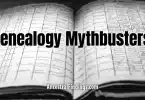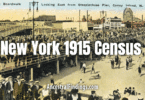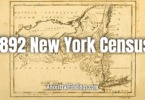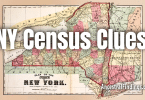Among the many state censuses conducted across the United States, Iowa’s 1925 enumeration stands apart. It is frequently cited by genealogists as one of the most detailed and valuable non-federal census records available. What sets it apart is not just the volume of information collected, but the nature of that information—specifically, its emphasis on lineage. This census doesn’t simply capture who was living in Iowa at the time; it provides rare and remarkably direct insight into each resident’s parentage and origins.
The Legislative and Historical Context
The 1925 Iowa State Census was not conducted in a vacuum. Its design reflected decades of evolving census practices, a growing interest in sociological data, and the administrative needs of a state experiencing both rural transformation and urbanization. Iowa, like many Midwestern states, had a substantial population of immigrants and their children by the 1920s. These demographic realities led lawmakers to call for a census that offered more than just a headcount.
The state constitution authorized regular enumerations for the purpose of legislative reapportionment. But in this case, officials used the opportunity to collect information that could help shape education policy, measure the economic standing of families, and assess the assimilation and civic engagement of residents—particularly in communities heavily settled by immigrants.
The Census Form and Data Structure
Each household schedule in 1925 included columns for the typical demographic details, but also devoted significant space to questions that reveal multigenerational context. Enumerators were instructed to write out full names of parents, include maiden names for mothers, and specify birthplaces by state or country. Where available, religion and years of education were noted with remarkable accuracy. These questions weren’t optional add-ons; they were integral to the form.
In addition to questions about education, the form documented grade levels completed and whether schooling took place in public or private institutions. This detail sheds light on educational access and the presence of parochial or ethnic schools in rural areas.
For military service, the census allowed respondents to identify themselves or household members who had served. While this doesn’t replace a pension file or enlistment record, it is a useful starting point for locating veterans of the Spanish-American War or World War I.
Religious affiliation, while not always precisely reported, offers an opportunity to connect families to church-based records—a critical step in tracing events like baptisms, marriages, and burials when civil records are unavailable or incomplete.
Regional Variation and Interpretation
Although the state issued uniform instructions, the actual execution of the census varied slightly by county. Some enumerators included margin notes, abbreviations, or clarifications that enhance the record’s value. Others wrote in pencil, creating fading issues on microfilm copies. In communities with large immigrant populations, foreign names were sometimes Anglicized or phonetically spelled.
The census is particularly helpful in counties with strong ethnic enclaves. For example, German, Norwegian, and Czech populations in counties like Winneshiek, Tama, and Chickasaw are well represented. These records often reflect a tight alignment between place of birth, religion, and language customs that persisted even into the second generation.
Cross-Referencing with Other Records
One of the strengths of the 1925 census is how well it integrates with other sources. Researchers can use it to triangulate:
- Birth and marriage certificates: A reported parental name or marriage location may confirm or correct vital records.
- Land ownership maps: When combined with residence and school district information, researchers can place families on physical property, often alongside extended kin.
- Church registers: Religious denomination fields offer entry points into denominational archives, especially for Lutheran, Catholic, and Methodist congregations.
- School records: Children listed with grade levels can sometimes be matched to surviving district-level school attendance logs.
When used in tandem with federal records, it becomes easier to verify or disprove assumptions about family origin stories, especially those passed down with vague detail or inconsistent surnames.
Challenges in Urban Enumeration
In Iowa’s larger towns and cities—Des Moines, Davenport, Cedar Rapids—enumerators encountered denser housing and multi-family dwellings, which sometimes led to recording inconsistencies. Street names were occasionally truncated, and apartment designations might be missing. However, for researchers accustomed to working with city directories and tax rolls, these records still provide a highly functional household snapshot.
Urban residents also included a more diverse population by race and ethnicity. The 1925 census captured African American families, as well as smaller Chinese and Lebanese communities, albeit with less consistency in descriptive data. In these cases, the census should be cross-referenced with local newspapers, church records, or fraternal organization membership lists to flesh out social context.
Preserving the Historical Value
The original census returns were preserved on microfilm and, in recent years, digitized for public use. Image clarity varies, and transcription errors remain a problem in searchable databases. When possible, always consult the original images.
The census was widely used by WPA researchers during the Great Depression for genealogical indexing projects. As a result, portions of it may also appear in compiled county genealogies or be referenced in local historical society bulletins.
A Deeper Research Example
Let’s examine the case of Mary Podrazik, age 42, residing in Johnson County. The 1925 census lists her parents as Joseph Podrazik and Anna Dvorsky, both born in Bohemia. It notes that Mary and her husband, Frank, were married in Linn County. Frank’s entry shows he was born in Illinois to Moravian-born parents. The census further records that their children are attending Catholic school and that the family speaks English at home.
This single entry confirms Mary’s maiden name, ethnic background, place of marriage, her children’s religious education, and the internal migration path of Frank’s family from Illinois to Iowa. Prior to this census, none of these facts were verifiable through census data alone.
Final Thoughts
The 1925 Iowa census represents a peak moment in American census-taking at the state level. It bridges the federal gap between 1920 and 1940 with more depth than either surrounding enumeration. For genealogists tracing Iowa families, especially those tied to immigrant roots, it offers unmatched detail. The inclusion of full parental information, maiden names, and marriage data makes it a key resource for documenting lineage.
Its usefulness goes beyond names and dates. It offers a glimpse into education, religion, and cultural continuity—aspects of life often absent from conventional government records. For this reason, it remains one of the most recommended resources in Midwestern family research. When used alongside land, church, and civil documents, it becomes a central reference point for confirming generational connections.
Researchers should approach it not simply as another census, but as a standalone document capable of anchoring an entire family line. It is, in every sense, a genealogist’s goldmine.






